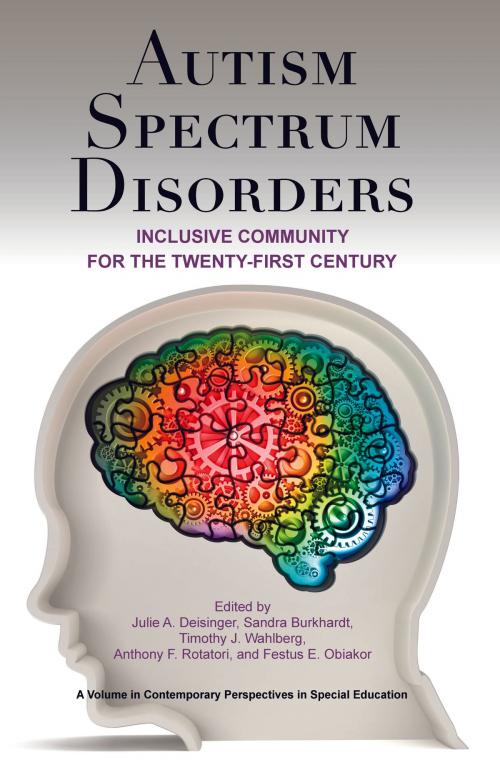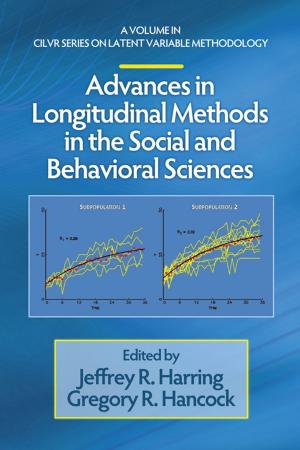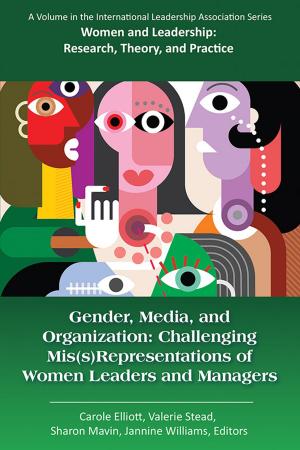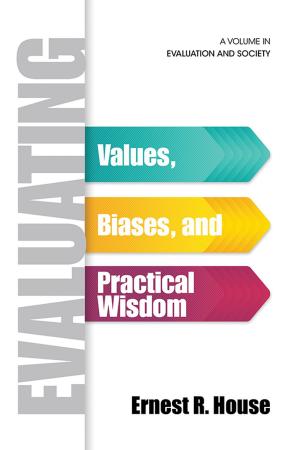Autism Spectrum Disorders
Inclusive Community for the 21st Century
Nonfiction, Reference & Language, Education & Teaching, Special Education, Mentally Handicapped, Health & Well Being, Psychology, Pathological Psychology| Author: | ISBN: | 9781617357824 | |
| Publisher: | Information Age Publishing | Publication: | May 1, 2012 |
| Imprint: | Information Age Publishing | Language: | English |
| Author: | |
| ISBN: | 9781617357824 |
| Publisher: | Information Age Publishing |
| Publication: | May 1, 2012 |
| Imprint: | Information Age Publishing |
| Language: | English |
Autism Spectrum Disorders (ASD) has received considerable educational, research, medical and media attention the past ten years. Yet the condition was first described more than a hundred years ago. Due to the disorder being confused with childhood schizophrenia, there was a lack of definitive attention by special educators, medical professionals and mental health clinicians to advance parameters related to: causes; prevalence; identification and diagnosis; education and treatment. Positively, this confusion changed starting in the 1980s with the clarification of the differences between these disorders with the 1980 publication of the” Diagnostic and Statistical Manual of Mental Disorders” (DSMIII). Soon after, the 1990 federal legislation “Individuals with Disabilities Education Act” recognized the disorder as a disability category eligible for special education services. Both of these events lead to an explosion of information related to: finding causes; accurate identification and diagnosis; best educational practices; and social, emotional, and behavioral treatments. Even with this explosion in the body of knowledge concerned with this disorder, much more needs to be learned and discovered. The successful use of this body of knowledge requires that accurate information be provided to educators, parents, clinicians, medical professionals, and mental health professionals to counter misinformation that exists among the general public, educators and clinical professionals. This is the primary purpose of “Autism Spectrum Disorders: Inclusive Community for the 21st Century”. It is accomplished by chapters on: the delineation of a blueprint for systems of care for persons with ASD and their families; a model to assist professionals in tackling the challenge of developing employability for individuals with high functioning ASD; best practice and research guidelines that lead to an affirmative ASD diagnosis; a comprehensive and current synopsis of genetic factors associated with ASD; adjustment challenges that may be present for a sibling of an individual with ASD; a comprehensive description of an innovative communitybased clinic that provides services needed by Individuals with ASD to meet their social, behavioral, educational and mental health needs; and effective treatment strategies and techniques that can be utilized by parents and educators to work effectively with children who have ASD. The chapters are written by researchers, clinicians, business professionals, and university professors who have an extensive knowledge of ASD. The contents of the book are an excellent reference for special education teachers, school psychologists, practicing mental health clinicians, and parents and family members of children and adults with ASD.
Autism Spectrum Disorders (ASD) has received considerable educational, research, medical and media attention the past ten years. Yet the condition was first described more than a hundred years ago. Due to the disorder being confused with childhood schizophrenia, there was a lack of definitive attention by special educators, medical professionals and mental health clinicians to advance parameters related to: causes; prevalence; identification and diagnosis; education and treatment. Positively, this confusion changed starting in the 1980s with the clarification of the differences between these disorders with the 1980 publication of the” Diagnostic and Statistical Manual of Mental Disorders” (DSMIII). Soon after, the 1990 federal legislation “Individuals with Disabilities Education Act” recognized the disorder as a disability category eligible for special education services. Both of these events lead to an explosion of information related to: finding causes; accurate identification and diagnosis; best educational practices; and social, emotional, and behavioral treatments. Even with this explosion in the body of knowledge concerned with this disorder, much more needs to be learned and discovered. The successful use of this body of knowledge requires that accurate information be provided to educators, parents, clinicians, medical professionals, and mental health professionals to counter misinformation that exists among the general public, educators and clinical professionals. This is the primary purpose of “Autism Spectrum Disorders: Inclusive Community for the 21st Century”. It is accomplished by chapters on: the delineation of a blueprint for systems of care for persons with ASD and their families; a model to assist professionals in tackling the challenge of developing employability for individuals with high functioning ASD; best practice and research guidelines that lead to an affirmative ASD diagnosis; a comprehensive and current synopsis of genetic factors associated with ASD; adjustment challenges that may be present for a sibling of an individual with ASD; a comprehensive description of an innovative communitybased clinic that provides services needed by Individuals with ASD to meet their social, behavioral, educational and mental health needs; and effective treatment strategies and techniques that can be utilized by parents and educators to work effectively with children who have ASD. The chapters are written by researchers, clinicians, business professionals, and university professors who have an extensive knowledge of ASD. The contents of the book are an excellent reference for special education teachers, school psychologists, practicing mental health clinicians, and parents and family members of children and adults with ASD.















